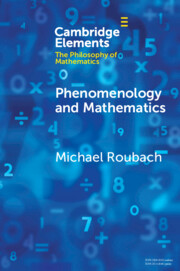Element contents
Phenomenology and Mathematics
Published online by Cambridge University Press: 27 November 2023
Summary
- Type
- Element
- Information
- Online ISBN: 9781108993913Publisher: Cambridge University PressPrint publication: 21 December 2023
References
- 6
- Cited by

